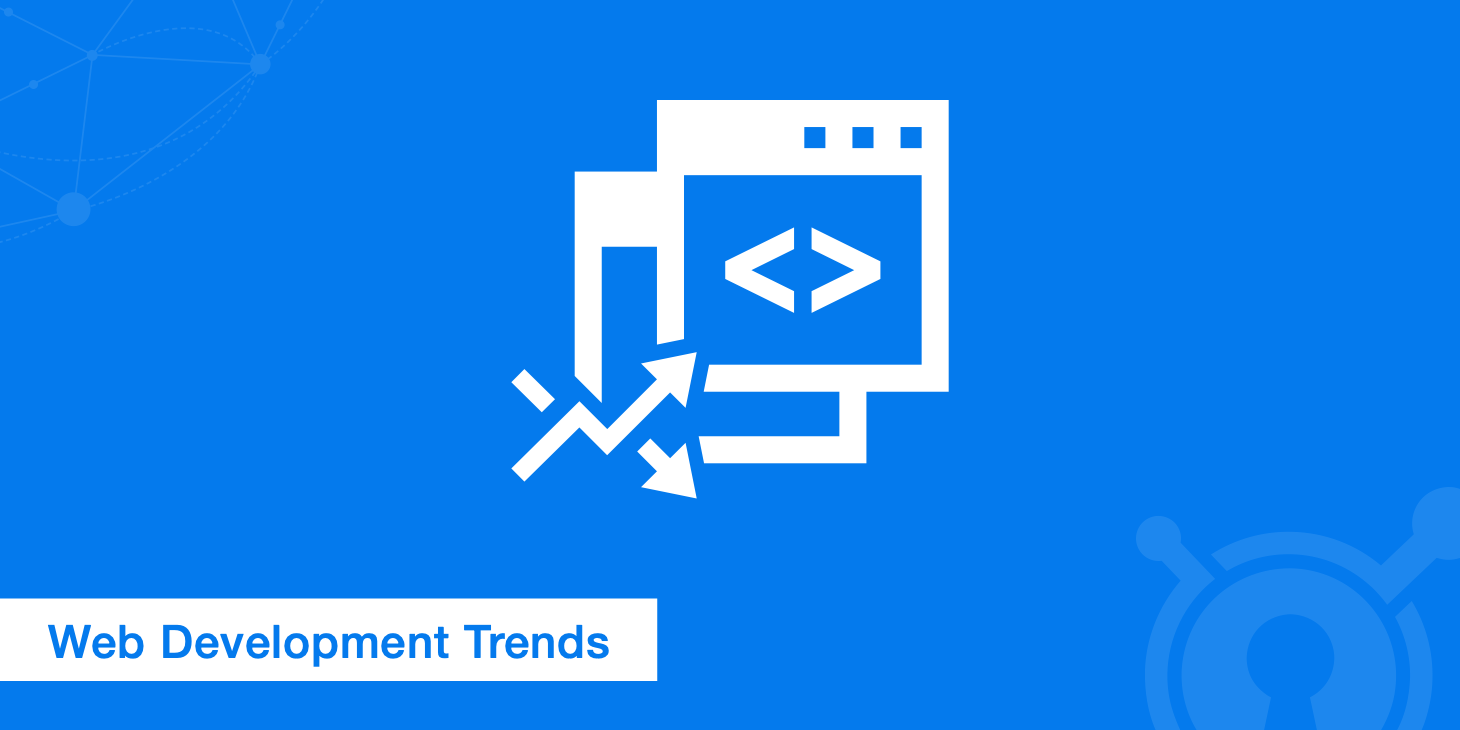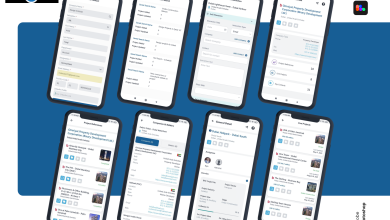Understanding What It Means To Be A Web Developer What Exactly is Web Development?

Since its inception at the end of the twentieth century, the internet has grown at an exponential rate. A substantial majority of people in the modern world utilize the Internet and numerous websites on a daily basis. Naturally, some people choose to study how to make them, so “What is a web developer?” is a frequently asked question.
Web development is quickly becoming one of the most appealing and well-paid employment options in today’s society. But what exactly is a web developer and what does one do?
You may have considered learning a programming language or two and working as a web developer. Fortunately for you, we recognize that prospective web developers will have concerns about the field, which is why we have put together this comprehensive guide, which seeks to answer the questions listed above and more.
We’ll look at the different types of web developers, as well as the web design vs web development controversy. In addition, we will go over some of the most popular programming languages for aspiring web developers, such as Python, JavaScript, and HTML.
Contents Page
- What is a Web Developer’s Top Priority?
- What Kinds of Web Developers Exist?
- Becoming a Web Developer
- Web Development vs. Web Design
- Popular Web Development Languages
- On Your Way to Becoming a Web Developer
What is a Web Developer’s Top Priority?
To answer the question, “What is a web developer?” we must first examine what a web developer does and how he or she does it.
A web developer or programmer is someone who converts a web design, generated by either a client or a design team, into a website.
They accomplish this by writing lines upon lines of sophisticated code in a number of programming languages. Web developers have a challenging job because they must essentially translate a language that we understand, such as English, into a language that a computer knows, such as Python or HTML.
As you can expect, this can take a significant amount of time and work, and it necessitates a thorough understanding of numerous programming languages and how they are utilized. Because different types of developers specialize in different areas, huge web projects are frequently the result of a collaboration between multiple distinct developers.
What Kinds of Web Developers Exist?
Unfortunately, there is no clear answer to the question “What does a web developer do?” As previously said, there are several sorts of web developers, each of which concentrates on a particular component of website development.
To understand what a web developer is, you must first realize that there are three sorts of developers: front-end, back-end, and full-stack.
Front-end developers are in charge of the portions of a website that visitors see and interact with, while back-end developers are in charge of the code that governs how a website loads and functions, and full-stack developers do a little bit of everything.
Front-End Designer
A front-end developer is someone who takes a client’s or design team’s website design and writes the code required to put it online. A good front-end web developer will be familiar with at least three programming languages: HTML, CSS, and JavaScript.
HTML enables individuals to contribute content to a website while categorizing it with headings, paragraphs, and tables. A good developer can use CSS to style the content and adjust things like colors, sizes, and borders. JavaScript supports the introduction of interactive components like push buttons. We’ll go through these languages in greater depth later.
So, what do web developers do when they work on a website’s front end?
A web developer is responsible for ensuring that all of the content required for the website is clear, visible, and located in the correct location. Front-end developers may also have content writing skills in some circumstances, allowing them to build material for the website as they go.
They ensure that the correct colors are used in the correct places, particularly when it comes to text colors, background colors, and headers. Some of the best front-end developers are also excellent designers, which allows them to make changes as they go.
They ensure that all outbound links are properly formatted, that all buttons function properly, and that the website is responsive and visually appealing. Mobile design is typically a large part of the project, but it is also critical to ensure that a website displays appropriately on all web browsers.
As you can see, the answer to the question “What is a web developer?” is far from straightforward. Even front-end developers have challenges, despite the fact that this is the easiest of the three forms of programming to learn.
If you want to become a front-end developer, however, read our article, which will teach you how to become an entry-level front-end developer.
Back-End Designer
While it may appear like front-end developers have a difficult job ensuring that a website looks amazing, functions properly, and contains the correct content, back-end developers have it considerably worse. While front-end developers are in charge of client-side programming, back-end developers are in charge of server-side.
This means they must write the code and programs that power the website’s server, databases, and any apps. The ability to write clean, efficient code that accomplishes what you want it to do in the shortest amount of time is the most critical skill for a back-end developer.
Because website speed is a vital aspect when it comes to search engine optimization (SEO), it plays a significant role in back-end development.
To completely understand what is a web developer, it is necessary to understand that back-end developers use a variety of different server-side languages to build complex systems.
PHP, Python, Java, and Ruby are some of the most popular programming languages. JavaScript is also growing more popular as a back-end programming language, and SQL is widely utilized to handle and analyze data in online databases.
Because different websites have varied requirements, a back-end developer must be adaptable, able to construct a variety of programs, and must have a thorough understanding of the languages that they employ.
This is critical to ensuring that they can devise the most efficient technique of developing the required program while also ensuring that it is secure, scalable, and easy to maintain.
Full-Stack Programmer
If you want a quick, basic response to the question “What is a web developer?” a full-stack developer is probably the closest thing you’ll get.
Full-stack engineers are well-versed in both front-end and back-end techniques and processes, putting them in an ideal position to supervise the entire process.
In the case of tiny websites with a limited development budget, a full-stack developer is frequently hired to build the entire website. In this situation, it is critical that they have a thorough understanding of both front-end and back-end programming and how they interact.
Learning full-stack development approaches offers numerous advantages, including:
- You will be able to design a whole website on your own after completing this course. This increases your employability and, as a result, your job security in the future.
- As a full-stack developer, you will grasp the relationships between a website’s front and back ends, allowing you to create efficient and effective programs for all aspects of the website.
- Full-stack engineers are frequently hired to manage major projects for large web development firms. Positions like this are likely to pay more than conventional web development positions, which makes them more appealing to developers. The term “full-stack” describes what it means to be a web developer.
- Although most developers begin with either front-end or back-end specialties, there are several reasons why you should consider studying both.
- It will increase your employability, give you a better understanding of the overall concept of web development, and make it easier for you to construct entire websites on your own.
What Is the Process of Becoming a Web Developer?
Now that we’ve answered the question, “What is a web developer?” It’s time to think about how to become a web developer.”
While many people conduct research, choose programming languages to learn, and attempt to learn web development, the majority of them fail owing to a noticeable lack of direction.
If you are serious about establishing a career as an experienced web developer, you must begin with a clear vision of how you want to do this. The instructions below should help you get started:
Begin by selecting what kind of developer you want to be. To begin, the languages and techniques you learn will be determined by whether you want to focus on front-end or back-end development.
Select a suitable course. The next step is to select a course or a series of courses that will teach you the fundamentals of web development. I’d recommend going to Udemy or edX and checking out their courses if you’re looking for high-quality courses.
Make a learning strategy. Everyone requires inspiration from time to time; otherwise, we just do not do the tasks that are required of us.
As you begin your journey to grasp what it means to be a web developer, you should create a learning timetable. Establish aside a certain number of hours per week for your classes, and make sure you set realistic goals for yourself.
As you can see, becoming a web developer isn’t all that difficult. Sure, it will take a lot of time, effort, and work, but if you want to, you can do it. It will only get easier after you have a firm grasp on ‘what is web development’ and ‘what does a web developer do.’
Web Development vs. Web Design
Now, we must pause for a moment to address an important issue that frequently arises when people discuss web development: the web design vs web development debate. Are they distinct? Is it the same thing?
No, web design and web development are not synonymous, however it all depends on how you define ‘design’ and ‘development.’
For the sake of this post, we believed that understanding what a web designer and a web developer are requires different knowledge. These occupations are distinct, and they play the following roles:
Web Designer: The web designer is the individual or group of persons in charge of developing the website concept.
Web Designer may decide that it must be a given color, with a specific set of content and pages.
They may design infographics, logos, and videos and tell the developer on where to place them on the website. They do not, however, contribute to the website’s development or underlying coding.
Web Developer : The web developer takes the designer’s concepts and writes the code that turns them into a website that people like you and me can access.
Although the web developer and designer may be the same individual – there is almost always some overlap between design and front-end development – the roles are distinct.
If you want to be a designer, you won’t have to learn any programming. As you can see, becoming a web developer isn’t all that difficult. As a result, the answer to the question ‘What is a web developer?’ does not include ‘creating a website.’
Popular Web Development Languages
It is critical to understand that there are a variety of different languages utilized for web development. As previously said, front-end and back-end developers will need to learn distinct languages, whereas full-stack developers will need to know all of the major web development languages.
With this in mind, we’ve compiled a list of some of the most popular languages for web developers to learn, as well as an explanation of what they’re used for and how you may learn them.
HTML
HTML is a must-know language if you want to know what a web developer is and how to become a front-end developer. To adequately clarify, I need you to complete the following for me:
Select ‘see page source’ from the context menu of your browser window.
You should be directed to a new tab with all of the information used to create this webpage.
What you’re looking at is mostly HTML code. It instructs the website as to what content to display and, to a lesser extent, how to present it. The command is located at the top of the page, on the first line. This instructs your web browser to anticipate HTML code.
As you continue to investigate, you will begin to recognize elements on the page. You will see instructions that you recognize, such as ‘link,’ ‘picture,’ or ‘video.’ These are all content instructions that tell your browser what to display, where to find the information, and how to display it.
HTML is a very simple language to learn, and it is frequently the first one that new programmers learn. Consider enrolling in the basic HTML course if you want to learn more about HTML, what a web developer is, and front-end web development.
CSS
CSS is the second most important front-end language, and every front-end developer should be competent in it.
While HTML informs the browser what content to display. It tells the browser how to display the content – it’s a’styling’ language.
After learning CSS, you will be able to achieve a variety of things, including:
Colors are changing. CSS allows you to modify the color of almost anything, from paragraph text to background colors to table borders.
Fonts are being changed. CSS also allows you to select the fonts you want to use on your website. Where you want them to appear.
Elements are being positioned. One of the most important aspects of what a web developer is capable of is organizing everything you see on the page. HTML allows you to include photos and videos on your website. But CSS allows you to instruct the browser how big to make them and where to place them.
Changing the font size. Are you creating a website for those with low vision? If this is the case, you will need to use your CSS coding knowledge to make your text larger.
As you can see, CSS is important in web development, particularly for front-end engineers.
If you want to study CSS, take a look at the Introduction to HTML and CSS course. Which will teach you the fundamentals of both HTML and CSS. Alternatively, you can try Interactive Coding for Beginners. Which will teach you the fundamentals of HTML, CSS, and responsive web building.
JavaScript
What exactly do web developers do? Most web developers use a computer language such as Java or HTML to create a website component. JavaScript developers are no exception, with the exception that they create extremely specific material. So, in terms of JavaScript, what precisely is a web developer?
The majority of JavaScript developers work on a website’s front end. They create short chunks of JavaScript code that make your website more responsive, engaging, and appealing to visitors. These JavaScript snippets are routinely included into the HTML source code of a website.
Although JavaScript has traditionally considered a front-end language. JS is essential for any front-end developer to master. It is also becoming increasingly popular for back-end development.
Because of their expertise of JavaScript, many front-end engineers are beginning to find job as full-stack developers. Implying that its usage and popularity are increasing.
If you’re a novice seeking to learn JavaScript, I’d recommend this edX course. This intermediate JavaScript course, on the other hand, would be beneficial if you already have some prior expertise.
PHP
PHP has historically dominated notions of what it means to be a web developer. It is referred to be the internet’s language. It is currently used in some capacity on around 80% of all websites. Despite its declining popularity, PHP is still an excellent language for any back-end web developer to master.
PHP is fairly simple to learn and use, making it a popular choice for new back-end engineers. It is widely used on tiny websites developed on platforms such as WordPress or Wix. And there are several freelance prospects for PHP developers.
If this piques your interest, you should look into taking an online PHP course. It is critical to take an up-to-date course, such as the one available on Coursera. Because previous versions of the language differ significantly from the contemporary one (PHP7).
Java
Java, the final language on our list. It has long been an important element of what it means to be a web developer.
It is an ancient programming language that is commonly used for a number of purposes.
Java is used in web development to create responsive, scalable web programs for responsive, fast website design.
For many back-end developers, Java is a must-have language. It is simple to learn, making it suitable for beginners, and it is simple to use. It is extremely scalable. Which makes it popular among larger websites such as eBay and Amazon, and it is extremely simple to manage.
If you want to try your hand at learning Java, take a look at this Java course. This course will teach you the fundamentals of Java coding, as well as what Java is used for and how to create server-side (back-end) programs.



